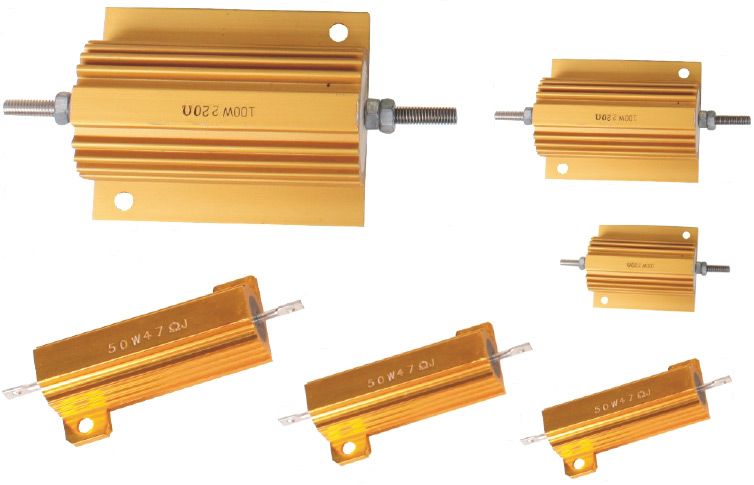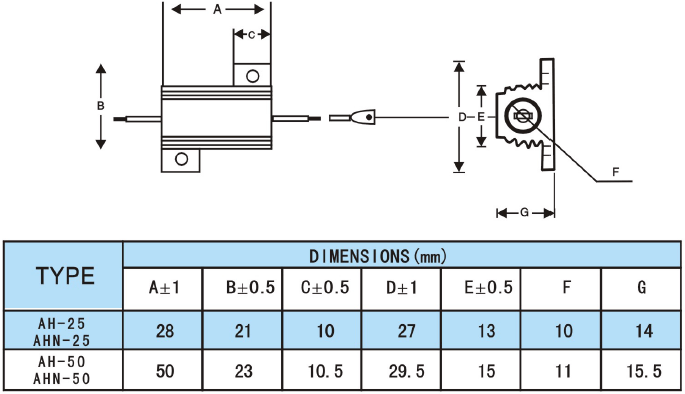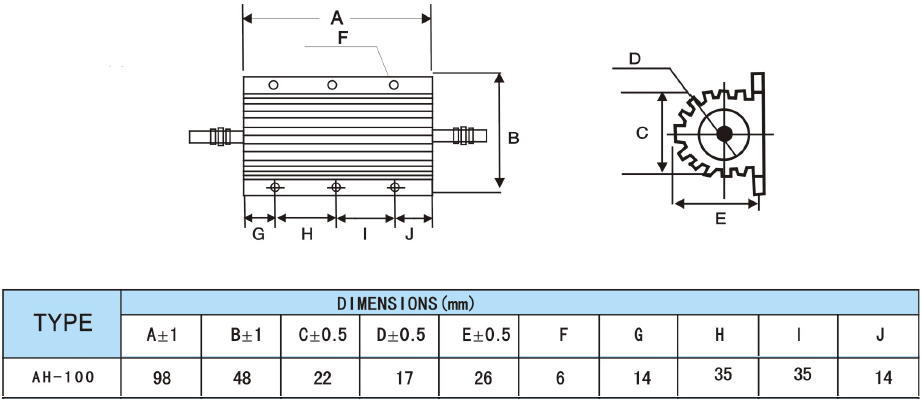Мощные резисторы для применения в силовой электронике
В силовой электронике помимо преобразовательных элементов (полупроводниковых приборов) – силовых ключей и диодов, которые в первую очередь определяют качественные показатели преобразовательных устройств, также активно используются разнообразные пассивные компоненты — конденсаторы, индуктивности, элементы защиты, резисторы и другие. Сфера применения мощных сопротивлений в силовых преобразовательных устройствах достаточно широка: это токоизмерительные шунты, разрядные резисторы, элементы снабберов, нагрузки, тормозные резисторы и многое другое. Заменить их в данных применениях на активные компоненты не всегда представляется целесообразным или возможным, поэтому применение мощных силовых резисторов будет востребовано практически всегда.
Одной из востребованных в силовой электронике серий мощных резисторов является серия AH от компании THUNDER и ее аналоги.
 Внешний вид резисторов серии AH
Внешний вид резисторов серии AH
Особенностями силовых резисторов серии AH являются высокая номинальная мощность, малые габаритные размеры и высокая точность сопротивления, высокая стабильность характеристик и усиленная конструкция, обеспечивающая охлаждение и отвод тепла. Допустимый диапазон рабочей температуры – от -55°С до +275°С (со снижением максимальной мощности). Наиболее популярными в нашем ассортименте являются следующие серии резисторов AH:
| Наименование | Номинальная мощность | Диапазон сопротивления | Класс точности |
|---|---|---|---|
| AH-25 | 25 Вт | 0.1 Ом – 100 Ом | 5% |
| AH-50 | 50 Вт | 0.1 Ом – 2.2 кОм | 5% |
| AH-100 | 100 Вт | 0.1 Ом – 1 кОм | 5% |
 Габаритные размеры резисторов AH-25 и AH-50
Габаритные размеры резисторов AH-25 и AH-50
 Габаритные размеры резисторов AH-100
Габаритные размеры резисторов AH-100
Достаточно часто встречающимся применением силовых резисторов является измерение тока, протекающего в цепи. При невысоком значении тока (обычно не превышающем десятков ампер) для его измерения применяются резистивные токовые шунты, напряжение с которых подается на дифференциальный усилитель. Преимуществами резистивных шунтов является их низкая стоимость и невосприимчивость к воздействию электромагнитных помех, а также, в некоторых случаях, компактность. Однако, на резистивном шунте рассеивается мощность, пропорциональная квадрату протекающего тока умноженное на сопротивление шунта, что снижает эффективность работы преобразователя. Поэтому диапазон токов, при котором применение резистивных измерителей оправданно, определяется допустимым уровнем потерь на сопротивлении шунта.
Более подробно технические характеристики мощных резисторов серии AH можно узнать в Спецификациях на страничке товара.
